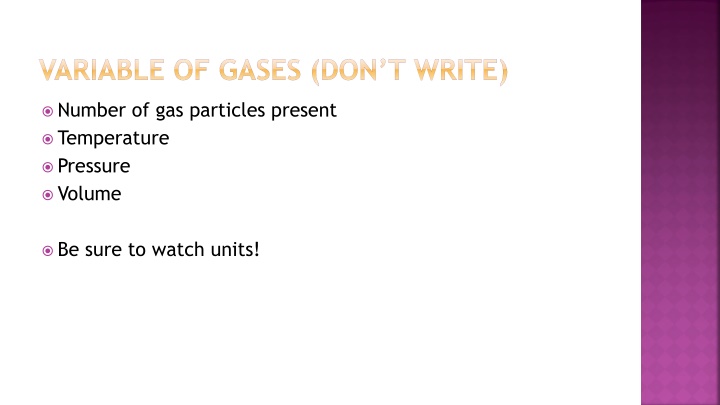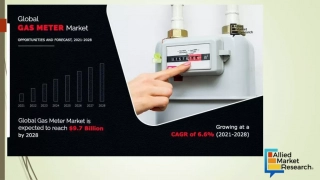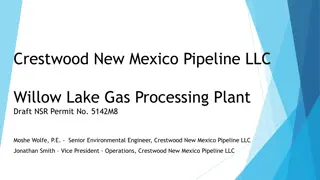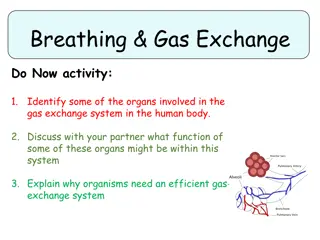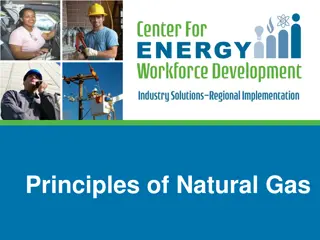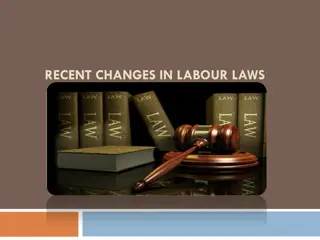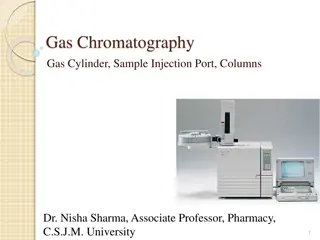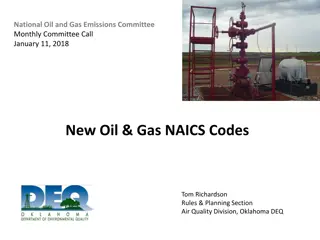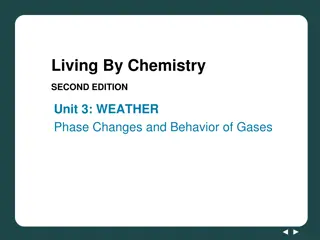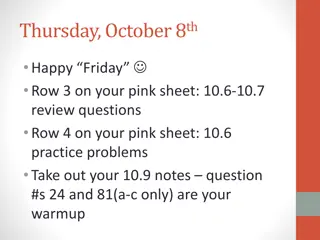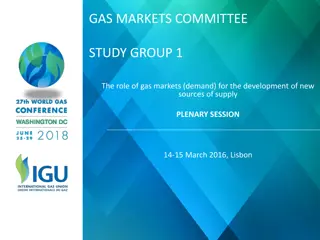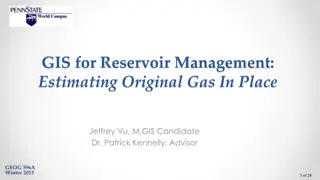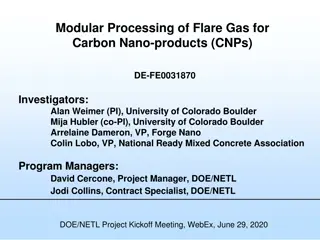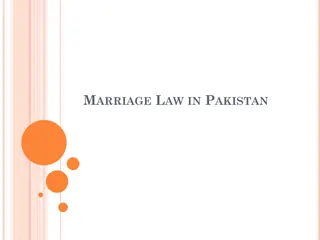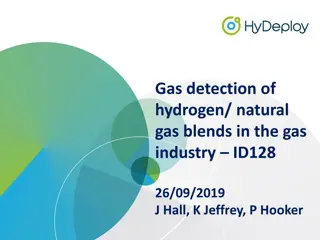Gas Laws and Relationships
Explore Boyle's Law, Charles's Law, Gay-Lussac's Law, Combined Gas Law, and Ideal Gas Law to understand the relationships between gas properties such as volume, pressure, temperature, and number of moles. Learn the formulas, examples, and applications of these fundamental gas laws.
Download Presentation

Please find below an Image/Link to download the presentation.
The content on the website is provided AS IS for your information and personal use only. It may not be sold, licensed, or shared on other websites without obtaining consent from the author.If you encounter any issues during the download, it is possible that the publisher has removed the file from their server.
You are allowed to download the files provided on this website for personal or commercial use, subject to the condition that they are used lawfully. All files are the property of their respective owners.
The content on the website is provided AS IS for your information and personal use only. It may not be sold, licensed, or shared on other websites without obtaining consent from the author.
E N D
Presentation Transcript
VARIABLE OF GASES (DONT WRITE) Number of gas particles present Temperature Pressure Volume Be sure to watch units!
GAS LAWS Pg. 99 foldable
BOYLES LAW Definition- the volume of a gas held at a constant temperature varies INVERSLY with pressure Decrease in volume represents an increase in pressure Formula- P1V1=P2V2 Example: The volume of a gas at 99 kPa is 300.00 mL. If the pressure is increased to 188 kPa, what will be the new volume?
CHARLESS LAW Definition- the volume of a gas is DIRECTLY proportional to its Kelvin temperature at constant pressure. Volume increases, temperature increases Formula- V1/T1=V2/T2or V1T2=V2T1 Converting from Celsius to Kelvin- C +273 Example- A gas at 89 oC occupies a volume of .67 L. At what Celsius temperature will the volume increase to 1.12 L?
GAY-LUSSACS LAW Definition- the pressure of a gas is DIRECTLY proportional with Kelvin temperature if volume is held constant. Formula- P1/T1=P2/T2or P1T2 = P2T1 Example: A gas in a sealed container has a pressure of 125 kPa at a temperature of 30.0 oC. If the pressure in the container is increased to 201 kPa, what is the new temperature?
COMBINED GAS LAW Definition- states the relationship of Kelvin temp, press, and vol, for a fixed amount of gas. All variables have the same relationship as in other gas laws. Formula- P1V1/T1= P2V2/T2 Example: A helium filled balloon at sea level has a volume of 2.1 L at 0.998 atm and 36 oC. If it is released and rises to an elevation at which the pressure is 0.900 atm and the temperature is 28 oC, what will be the new volume?
IDEAL GAS LAW Definition- describes the physical behavior of an ideal gas in terms of pressure, Kelvin temperature, volume, and number of moles present. Ideal- assumes have no intermolecular attraction Formula PV=nRT R is the ideal gas constant = 0.0821 (if P is in atm)= 8.314 (if P is in kPa) n= the number of moles Example- If the pressure exerted by a gas at 25 oC in a volume of 0.044 L is 3.81 atm, how many moles of gas are present?
